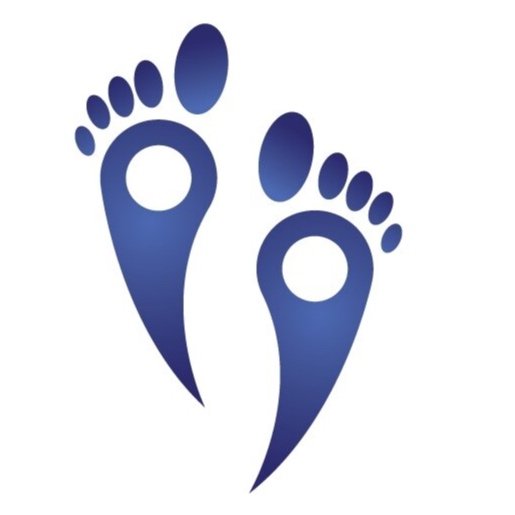Why am I getting pain on outside of the knee - Runner’s Knee is common in Running Sports (ITBS - iliotibial band syndrome)
What is Runner’s Knee?
Runner's knee causes sharp discomfort on the outside of the knee joint. Iliotibial band syndrome is the medical term for runner's knee (ITBS).
The pain begins when you run including twisting and turning as well as accelerating and de-accelerating (starting and stopping). ITBS symptoms usually emerge when you raise the intensity of your physical activity or add further high impact activity on top of your physical activity.
It is very common condition among cyclists, athletes, runners, football players, crickets players, and tennis players.
Iliotibial band is a wide tough band of fascia that helps brace the hips and knees during running. It runs from the top of the pelvis (iliac crest) to the outside part of the leg bone (femur) and attach below the knee (tibia). It also joins the gluteal muscles (glutes) with the tensor fasciae latae muscle. These muscles' reciprocal movement helps stabilise your leg position.
At times, forces involved become imbalanced and can undue strain on iliotibial fascia especially if the way these muscles interact becomes muddled.
British Journal of Sports Medicine “ Ultrasound-guided local steroid injections are effective in relieving symptoms and response to corticosteroid injections helps diagnose iliotibial band syndrome as well”.
What are the common signs and symptoms of ITBS (runner's knee)?
Burning sensation or pain on outer side of the knee during or after running.
At times swelling and redness on outer side of the knee during or after running.
Sharp discomfort when you first start moving.
Pain usually settles with icing and resting; however, pain returns as soon as you start your activity.
Diagnosis:
Physiotherapists can detect if a person has ITBS. They'll want to know when the discomfort started and what activities are causing it. The problem is friction and overuse.
Ultrasound can detect ITBS and findings include soft-tissue swelling or discrete fluid collection or bursitis between between the iliotibial band and the femoral epicondyle.
How long does the runner's knee lasts (duration of symptoms)?
You can swiftly relieve the pain of runner's knee with tailored treatment. It might take up to 12 weeks to heal completely. Even if your runner's knee (ITBS) appears to be gone and you're pain-free, you should only gradually increase your running distances and intensity in the first few weeks. Follow our advice on resting and choosing running shoes, and stick to your self-treatment exercises for runner's knee.
How long should I take a break or rest?
This is a reminder to all ambitious runners and athletes: it's critical to take breaks while undertaking corrective exercises. If you continue to irritate the region, you'll be delaying your long-term healing and even undoing whatever progress you've made. Remember that it was the uneven weight distribution that caused your ITBS in the first place. You will not make progress if you return to jogging too soon after completing your remedial exercises. Allow your body to rebalance itself so that runner's knee and pain do not become a persistent issue.
How can I treat runner's knee (ITBS) using running shoes and a knee bandage?
Is it a good idea to use a knee bandage? A bandage can provide some assistance by supporting the knee and assisting with stability. The extra pressure can actually exacerbate pain in some circumstances, depending on the person and the bandage utilised. You should test whether or not a knee bandage is appropriate for you. It's important to remember that a bandage can only provide support; it can't eliminate the reasons of runner's knee mentioned above.
Which running shoes should you choose?
Giving a broad answer to this topic is challenging. Many aspects influence your shoe selection, including biomechanics, tension balances, running technique, and the amount of time you spend running. Overpronation of the foot, as indicated above, can sometimes be helped with the correct insole support. However, we advocate performing the exercises below and changing your running technique so that you actively use the foot arches, rising muscles, and fascia as cushioning structures rather than the bones and joints. This method resembles a healthy barefoot running approach and entails the use of barefoot running shoes. Be cautious: adaptation takes time.
What is the best way to treat runner's knee?
Ultrasound guided local corticosteroid injection targeting beneath the iliotibial band reduces pain significantly and at times no need for further management; however, - gradual and graded resumption is recommended (Hong and Kim 2013).
You'll begin fascia training with focused strength exercises for the muscles that stabilise your pelvis and hips at the halfway point of your ITBS treatment. Important to know: To assist you bring your hips back into their right, natural posture, relax the tensor fasciae latae muscle, which is often extremely stiff, as well as the hip flexors.
The ability to manage the stabilising muscles in your buttocks and core is critical for long-term running fitness. Proper foot pronation (where the foot does not tip inward too far) is the foundation for maintaining a secure knee and leg position. Barefoot running is the most basic form of exercise for the muscles that support your foot, as does strengthening the big toe muscle that allows it to expand outward and draw inward (the abductor hallucis).
Class IV LASER therapy and taping is also very useful when resuming the activity or rehabilitating towards the high impact activity. Your physiotherapist will be able to guide you through the journey and offer you these modalities as needed.
Ultrasound Guided Injection for Runners Knee - iliotibial band syndrome bursitis
What are the ways to avoid runner's knee (ITBS):
Modifying one's physical activity and changing their footwear can help to prevent IT band syndrome.
The following are some suggestions for avoiding IT band syndrome:
Changing your workout routine: If you have IT band syndrome, avoid running on slopes or uneven surfaces. They should avoid overtraining and allow enough time between sessions to relax. They may also discover a fresh training setting that decreases knee stress.
Stretching to prevent tightness: To maintain hip and upper limb flexibility, a person should stretch the IT band area, which includes the outer thigh and hamstrings, on a regular basis. Form rollers are very useful.
Investing in new athletic footwear: Old shoes should be replaced with fresh ones to avoid an uneven walk caused by worn soles. Pronation, a risk factor for IT band syndrome, can also be corrected with the right shoe. Inserts are also available to support the arch of the foot and assist stabilise it.
Physiotherapist with Ultrasound and Injection Therapy Specialty: An expert can assist a person in determining the biomechanical causes of IT band syndrome. They may also devise a rehabilitation program to improve hip, pelvic, foot, ankle, and knee flexibility, strength, and controlled mobility as well as able to offer you injection under ultrasound guidance.
IT band syndrome can be avoided, and athletes can usually return to their sport after making the necessary adjustments.
Outlook/Summary:
After stopping the aggravating activity for a while, a person with IT band syndrome should starts to recover.
Stretches and graded exercises program that strengthen and keep the legs flexible can help to prevent the chance of reinjury and recovery back to activity.
After initial resting and tailor made rehabilitation, a person should be able to resume their favorite activity - gradual and graded resumption is recommended.
Ultrasound guided local corticosteroid injection targeting beneath the iliotibial band reduces pain significantly and at times no need for further management; however, - gradual and graded resumption is recommended (Hong and Kim 2013).
To book for an appointment you can call our normal reception line, 0121 285 5656 or email direct to hello@thepodiatryclinics.co.uk requesting an appointment. Please include your name, date of birth, your address and GP contact details.
You will be sent a form to complete and forward back to us or bring along on the day.
References:
Br J Sports Med. 2004 Jun; 38(3): 269–272. Local corticosteroid injection in iliotibial band friction syndrome in runners: a randomised controlled trial. P Gunter, M Schwellnus, and P Fuller
Korean J Pain. 2013 Oct; 26(4): 387–391. Diagnosis of Iliotibial Band Friction Syndrome and Ultrasound Guided Steroid Injection. Ji Hee Hong, MD and Ji Sub Kim, MD



